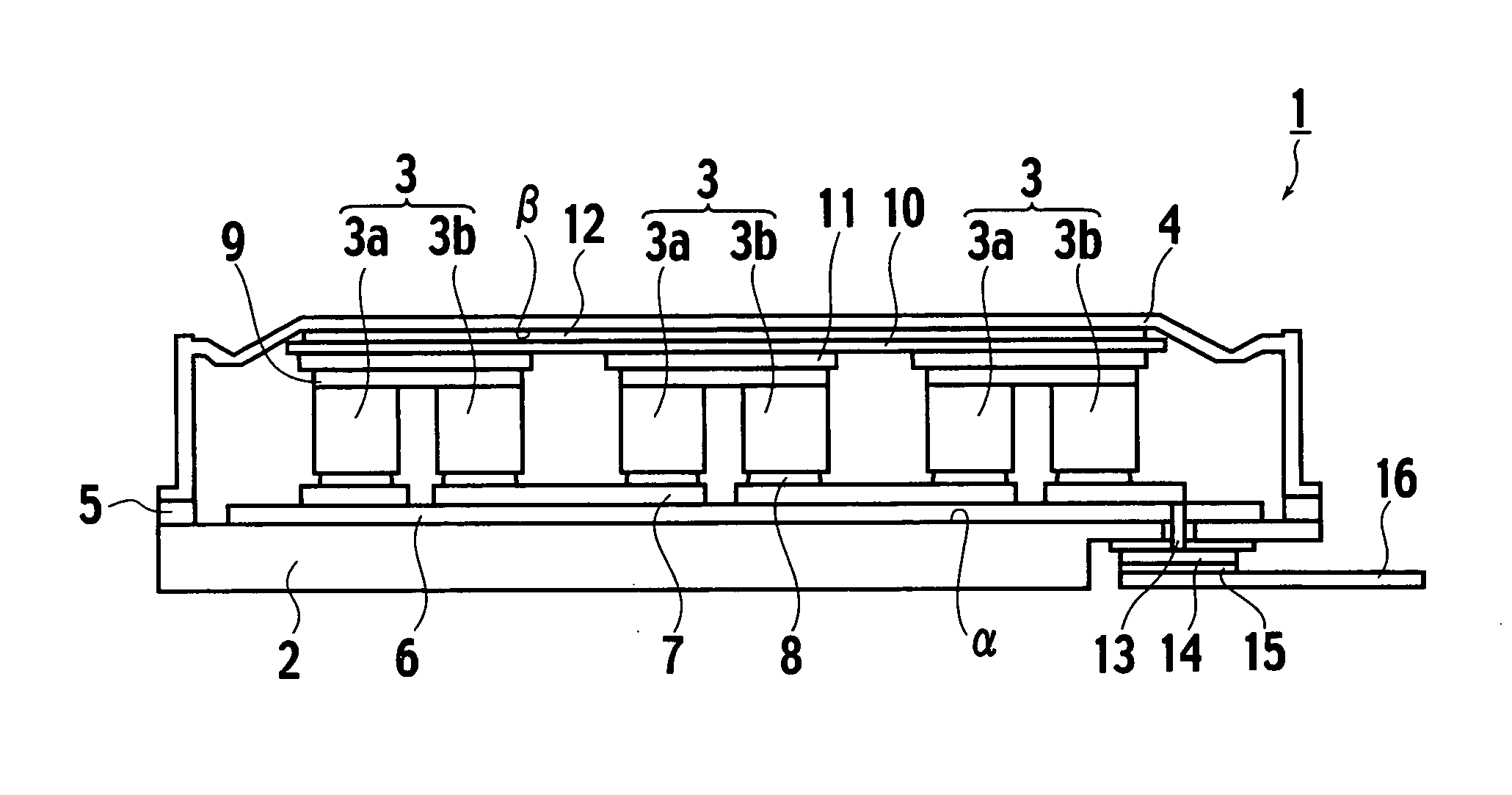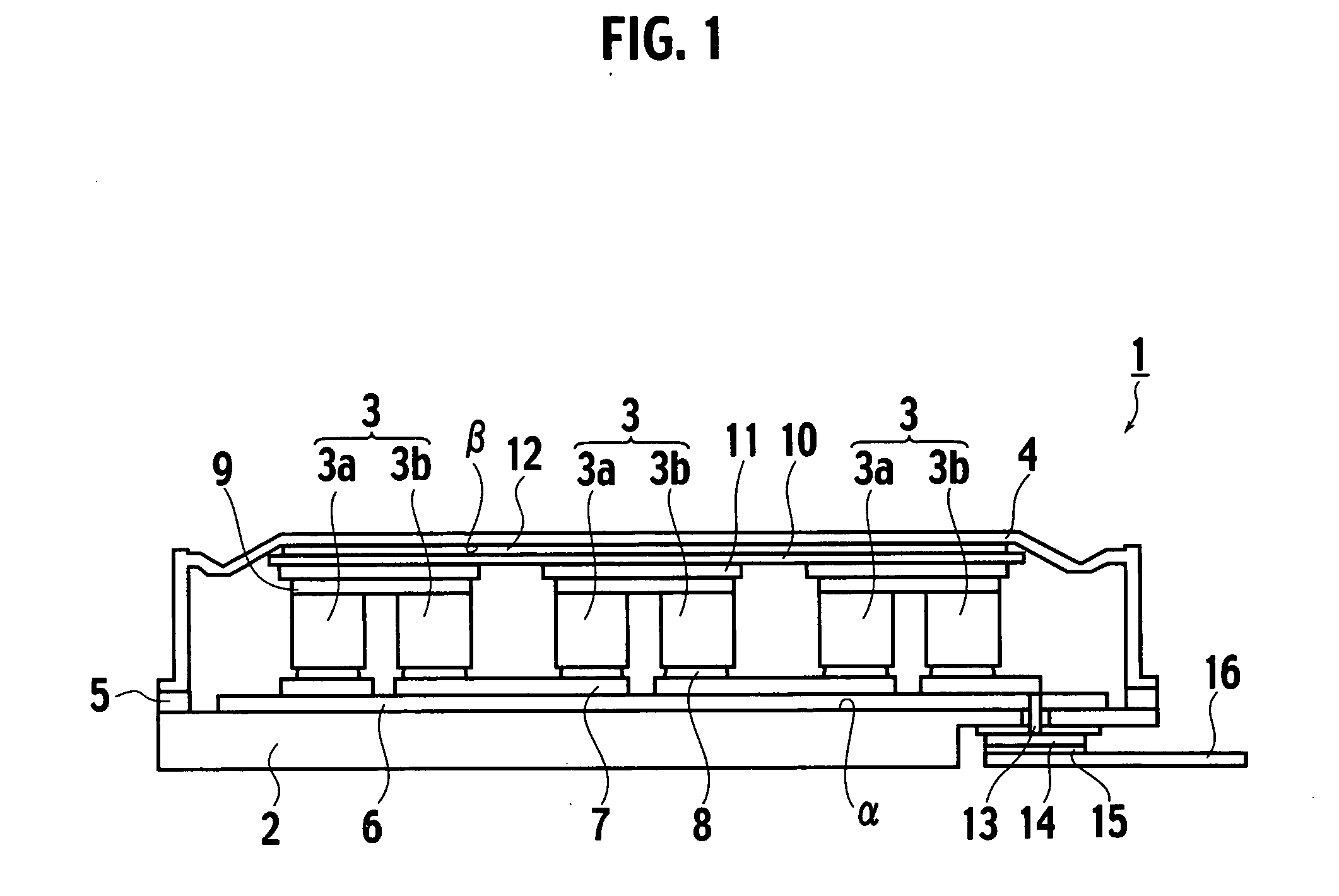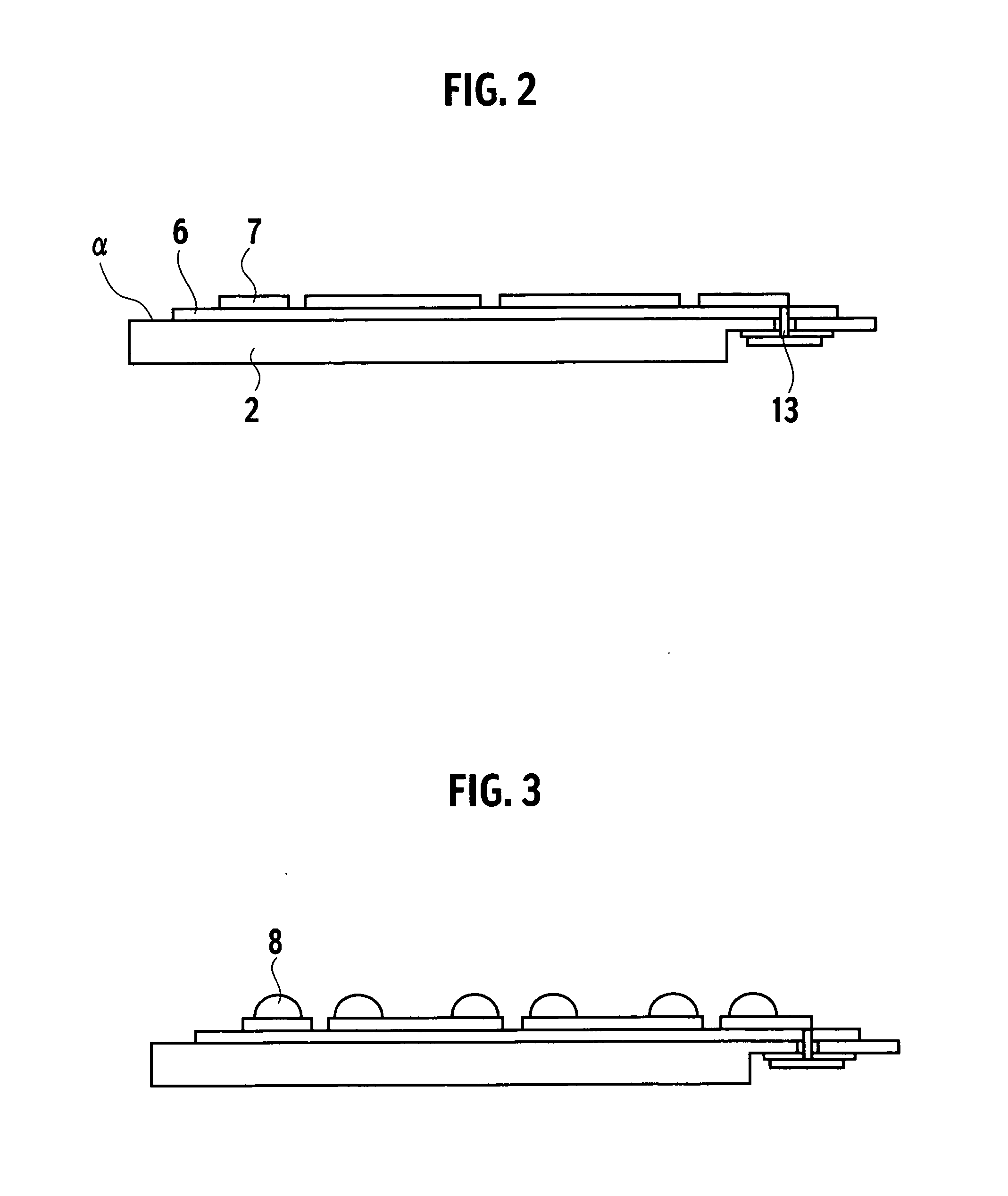Thermoelectric device and method of manufacturing the same
a technology of thermoelectric devices and manufacturing methods, applied in the direction of thermoelectric devices, thermoelectric device details, printed circuit aspects, etc., can solve the problems of insufficient supply, inability to obtain desired power generation performance, and deterioration of power generation efficiency, so as to improve the productivity and reliability of the device, improve the efficiency of the device, and simplify the structure
- Summary
- Abstract
- Description
- Claims
- Application Information
AI Technical Summary
Benefits of technology
Problems solved by technology
Method used
Image
Examples
first embodiment
[0072] As shown in FIG. 1, a thermoelectric device (closed vessel) 1 according to a first embodiment of the present invention is constructed by a metal substrate 2 made of metal, thermoelectric elements 3 put on a center portion on a surface (referred appropriately to as a “first principal surface a” hereinafter) of the metal substrate 2, a lid 4 for covering upper surfaces and side surfaces of the thermoelectric elements 3, and a joining metal member 5 made of metal to hermetically seal the metal substrate 2 and the lid 4 in a peripheral portion of the first principal surface α. More particularly, all members constituting the vessel (thermoelectric device) 1, i.e., the metal substrate 2, the metal lid 4, and the joining metal member 5, are made of metal.
[0073] An insulating layer 6 is provided in the center portion on the first principal surface α, and first conductive wiring layers 7 are formed on the insulating layer 6. As the insulating layer 6, preferably a resin or a resin co...
second embodiment
[0125] Next, a second embodiment will be explained hereunder. In the second embodiment and respective variations of the second embodiment, the same reference symbols are affixed to the same constituent elements as those explained in the first embodiment, and thus their redundant explanations of the same constituent elements will be omitted herein.
[0126] As shown in FIG. 15, a thermoelectric device 31 according to the second embodiment of the present invention includes a substrate 32, the thermoelectric elements 3 on the substrate 32, and a lid 34, and also includes a spray deposit 35 formed to contact tightly an inner surface of the insulating lid 34.
[0127] The substrate 32 is constructed by an insulating substrate 32a, a metal film 32b provided on the insulating substrate 32a, and wiring layers 37. Here, the surface of the substrate 32 means the surface on which the thermoelectric elements are loaded, and the back surface of the same means the surface on which the metal film 32b ...
third embodiment
[0163] Next, a third embodiment will be explained hereunder. In the third embodiment, the same reference symbols are affixed to the same constituent elements as those explained in the first embodiment, and thus their redundant explanations of the same constituent elements will be omitted herein.
[0164]FIG. 26 is a sectional view of the thermoelectric device 1 according to the third embodiment. The electromotive force generated from the thermoelectric elements 3 is taken out to the outside of the thermoelectric device 1 to pass through the through hole wiring 13, the metal layer 14, the solder 15, and the external electrode 16 respectively. In the third embodiment, an insulating material 18 to insulate from the cooling medium is provided on the surface opposing to the surface that is connected to the solder 15 of the external electrode 16.
[0165] In the thermoelectric device 1, etc, in above respective embodiments, thicknesses of the metal substrate 2, and the like are reduced in the...
PUM
| Property | Measurement | Unit |
|---|---|---|
| temperature | aaaaa | aaaaa |
| diameter | aaaaa | aaaaa |
| pressure | aaaaa | aaaaa |
Abstract
Description
Claims
Application Information
 Login to View More
Login to View More - R&D
- Intellectual Property
- Life Sciences
- Materials
- Tech Scout
- Unparalleled Data Quality
- Higher Quality Content
- 60% Fewer Hallucinations
Browse by: Latest US Patents, China's latest patents, Technical Efficacy Thesaurus, Application Domain, Technology Topic, Popular Technical Reports.
© 2025 PatSnap. All rights reserved.Legal|Privacy policy|Modern Slavery Act Transparency Statement|Sitemap|About US| Contact US: help@patsnap.com



